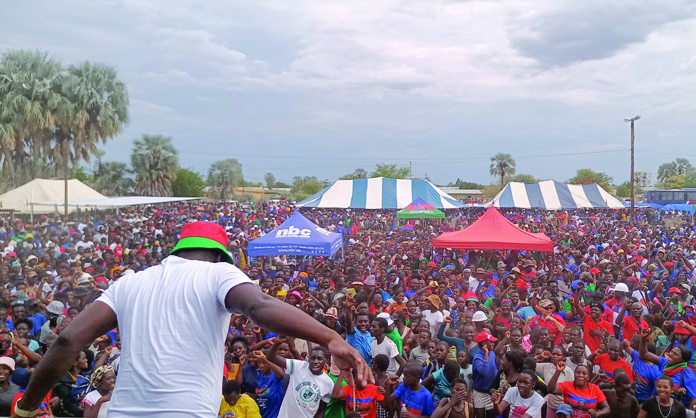MORE than 90% of households in the Omusati region who registered as severely affected by the drought are yet to benefit from the government’s interventions in this regard.
Omusati governor Erginus Endjala made this revelation yesterday during president Hage Geingob’s townhall meeting at Outapi. He said out of 33 930 households, with a population of 219 447 beneficiaries who have been identified as severely affected by the devastating drought in the Omusati region, only 2 898 households have thus far benefited from the drought relief programme during June and July.
This translates to 16 339 beneficiaries, or less than 10% of the total people registered. Women, children, pensioners and child-headed households rank high amongst those severely affected by the drought.
“According to the report by the Office of the Prime Minister, the 2018/2019 rainy season in the Omusati region has been extremely poor as it was manifested in the form of a delayed rainfall season, sporadic and erratic rainfall patterns and frequent prolonged dry spells, compounded by extremely high temperatures. As a result, crops, livestock and the water supply are negatively affected”.
“Urgent consideration for the comprehensive relief food distribution is the way to go in order to mitigate the impact of the drought on community livelihoods,” Endjala said.
The assessment report further indicates that the preliminary crop estimates showed a massive reduction in the anticipated harvest by 84% of last season’s harvest, and 78% below average production.
The production of mahangu pearl millet, a staple food, was estimated to have decreased by 85% the last season, and 78% below the average production.
Sorghum production was forecasted to decline by 75% the last season, and about 92% below average production.
“Pertaining to livestock, grazing was reported to range between poor to very poor. The rate of livestock mortality across the region due to poor grazing and a lack of water continues to increase. All of these point at the precarious situation posed by drought to humans and animals,” the governor stated.
The Ministry of Agriculture, Water and Forestry has supplied the region with 1 450 bales of free feed to assist the poor farmers during the month of July.
A total of 133 farmers have so far benefitted from the free animal feed programme, and a further 120 subsidy claims worth N$55 480 were submitted for payment.
In addition, the agriculture ministry, in collaboration with the Office of the Prime Minister, has made available an amount of N$1 million to the region for the installation of three boreholes, to clean and test seven boreholes, rehabilitate eight hand pumps, as well as buy materials for a short pipeline covering a total distance of 56 km in eight constituencies.
“Due to the shortage of grazing in the region, some farmers opted to seek grazing space in Angola. The procedures to move the animals across the border for grazing purposes are in place. It is reported that bales of grass from Angola are sold at the border as livestock fodder, which poses a serious challenge to animal health authorities,” Endjala continued.
Prime minister Saara Kuugongelwa-Amadhila noted that the government is currently experiencing drought relief food deficits due to budget constraints.
However, plans are underway to make sure that drought relief food distribution reaches all the affected households countrywide, she added.
More than N$104 million has so far been raised for the drought relief intervention programme.
Stay informed with The Namibian – your source for credible journalism. Get in-depth reporting and opinions for
only N$85 a month. Invest in journalism, invest in democracy –
Subscribe Now!






